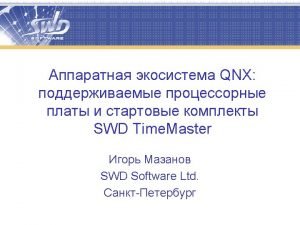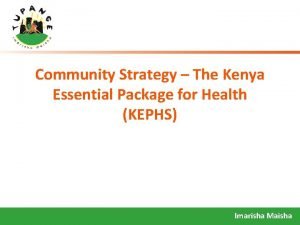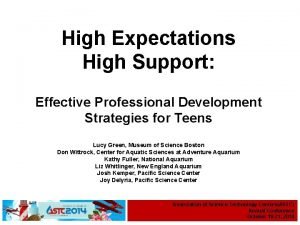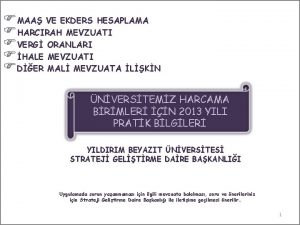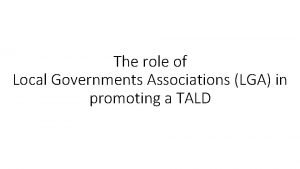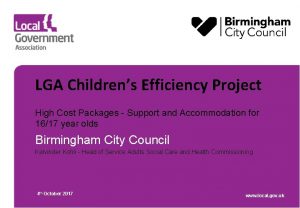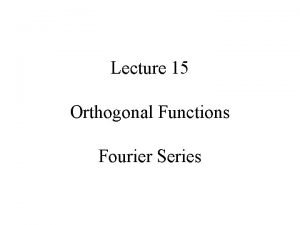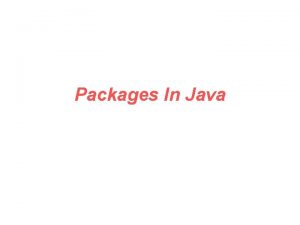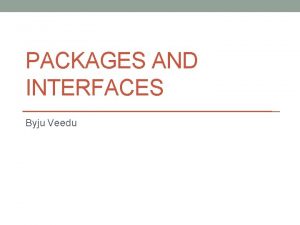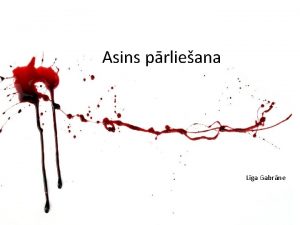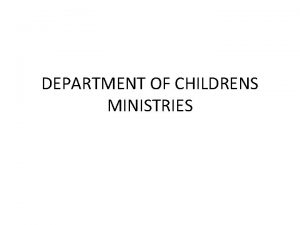LGA Childrens Efficiency Project High Cost Packages Support













- Slides: 13

LGA Children’s Efficiency Project High Cost Packages - Support and Accommodation for 16/17 year olds Birmingham City Council Kalvinder Kohli - Head of Service Adults Social Care and Health Commissioning 4 th October 2017 www. local. gov. uk

Overview • Understanding the current pricing structure and outcomes • Application of PIE and MST for a group of young people as an alternative to accessing supported accommodation via a framework arrangement • Testing a new strengths based referrals process • Development of a predictive tool – to identify the high risks/needs earlier Some developments since January • Children’s Trust • West Midlands Support Accommodation Framework • Increasing rates of homelessness within Birmingham

Understanding pricing and Outcomes To establish how efficiency can be achieved it was important to understand the current pricing of placements and the outcomes achieved for young people. Over 80 referrals of 16/17 year olds were reviewed to understand what causes placement cost to increase. What we found - Young people who had a high number of risks were accommodated in higher cost placements - No evidence of reduction in risks - Young people did not see outcomes being achieved in these higher cost placements. No correlation between good outcomes and high cost placements. - 80% of reviewed cases found risks to increase with time and this saw a correlation with placement moves and an increase in placement cost. Placement moves ranged from 3 – 17.

Understanding Pricing and Outcomes 5 young people were accommodated within a Psychologically Informed Environment and received Mental Skills Training to test whether a change in their environment and support would see different outcomes and whether this could prove to be cost effective. - The young people were chosen due to their high level and number of risks (6+) they presented as assessed by their social workers. - Young people came from different services – foster, residential and other supported accommodation placements and were described to be in high cost placements (high cost residential placement above £ 3, 000, supported accommodation placements £ 500, fostering placements £ 700 per week) - Young people were engaged in the project for approx. 6 months and an outcomes star was completed 6 weekly to measure success

What we found in terms of cost – The accumulative weekly placement cost for these 5 young people would have amounted to £ 7, 138 if they had remained in their previous placements. The total weekly placement cost for 5 young people after move to Conybere Gardens under this project £ 998. 05. Cost associated to MST is a one off payment of £ 2, 000 per young person totalling £ 10, 000 for 5 young people. Total cost of 5 young people if they had stayed with their previous placements, over a 52 week period £ 371, 176. Total cost of 5 young people in current placement at Conybere Gardens, over a 52 week period including the cost for MST £ 61, 898. 60. That is a saving of £ 309, 277. 40 for 5 young people over a year. The cost to train staff in PIE is £ 1000 for a 3 day training course (this is included within the accommodation cost of placement at Conybere Gardens at £ 199. 60).

Were outcomes compromised over savings? 4 out of 5 young people engaged with the project. The outcomes star completed for each young person accommodated within this placement saw outcomes improve. Young people made improvements in their money management, self care, emotional and mental health, reduced alcohol and drug misuse amongst other outcomes. The placement of young people within PIE and the delivery of MST proved that young people did not need to remain in this cycle - High risk/need No outcomes being achieved Placement move Increase in Placement cost

How have these savings been possible? Measuring the effectivenes s of PIE Through accommodation in a Psychologically Informed Environment Video clip

Mental Skills Training – Developed by University of Birmingham - 10 week programme aimed at building resilience for young people which included 1 workshop a week. The workshop focused on team work, problem solving and building confidence. MST Why was this important? To push outside of their comfort zones by challenging them and proving to them that they can achieve more than they think they can, that the only barrier holding them back is their own mental thought process. MST encouraged young people to build positive networks with peers ensuring a safety net for when they move onto independent living, preventing isolation.

Testing a strengths based referral process All young people placed at Conybere Gardens were placed via a new referral process, using a conversational approach between social worker and provider followed by a meeting and visit with young person. A transactional process (80 case analysis) Poor focus on outcomes, little improvement made, young people are contained and find themselves in a cycle - presenting challenging behaviours, increasing in no. of placement moves, often then resulting in a higher cost placement. Conversational approach? Providers were able to see the young person as an individual with specific goals, conversations took place about how to work together to meet goals and aspirations, risks were put into context (historic risks/events relating to behaviours) and discussed. When young people are given a choice the success rate of outcomes increased.

An Aspirational Tool Developed by Dr Ankush Mittal (see document) ‘The truth is that we become accustomed to a culture that tries to fix things as opposed to prevent. ’ Predictive Tool – to identify higher risk/needs earlier - Earlier needs and risks can be identified and support implemented the greater chance of positive outcomes – positive life. - Financially, early intervention means as risks reduce so does accommodation and support cost. Risks - Earlier intervention requires a strengths based approach or information can be used negatively resulting in increased costs and low expectations of young people by professionals

Lessons learnt Cultural Barriers to try something different Positive effect of PIE and MST on outcomes and placement cost A focus on goals and aspirations upon referral to achieve better outcomes Early identification of YP assessed as becoming high risk A cultural shift towards prevention Understanding the real detail behind perceived high risk/high cost Relatively small sample group


Kalvinder Kohli Kalvinder. Kohli@birmingham. gov. uk Manvinder Kaur Manvinder. Kaur@birmingham. gov. uk
 Board support packages
Board support packages Opportunity cost formula
Opportunity cost formula Productively efficient vs allocatively efficient
Productively efficient vs allocatively efficient Allocative efficiency vs productive efficiency
Allocative efficiency vs productive efficiency Kenya high priority health packages
Kenya high priority health packages High expectations high support
High expectations high support Pin grid array and land grid array
Pin grid array and land grid array 18 inci madde kapsamına giren ödemeler (gvk md. 94/2-a)
18 inci madde kapsamına giren ödemeler (gvk md. 94/2-a) Function of lga
Function of lga Lga exercise
Lga exercise Dr ankush mittal
Dr ankush mittal Cos to lga
Cos to lga Cost control and cost reduction project report
Cost control and cost reduction project report Cost control and cost reduction project report
Cost control and cost reduction project report
